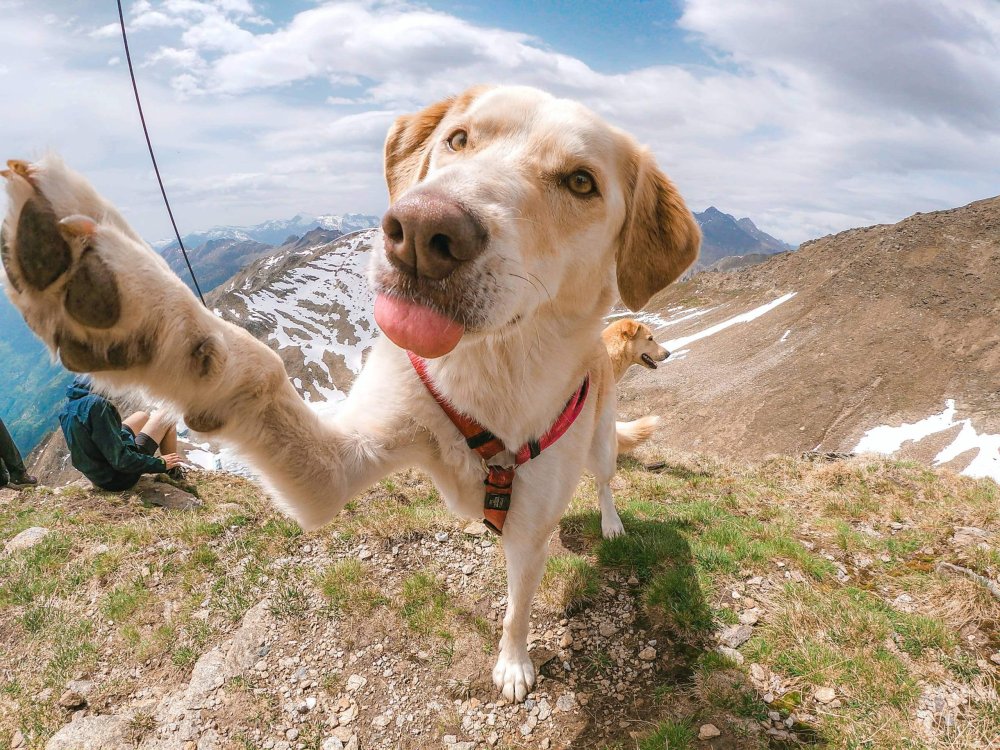Did you know that nearly 80% of dogs exhibit the scratch reflex when you pat them in just the right spot? This quirky behaviour, often seen as a rhythmic leg kick, is more than just a cute party trick. It’s a fascinating involuntary response known as the canine scratch reflex. When you scratch a dog’s belly or side, it triggers nerves under the skin that send a message to the spinal cord. The result? A reflexive kick of the leg. This article delves into why dogs have this reflex and what it tells us about their nervous system. Understanding this behaviour not only deepens our bond with our furry friends but also sheds light on their unique biology.
The Science Behind the Scratch Reflex

Neurological Response
When you hit that sweet spot on a dog’s belly, you’re setting off a chain reaction in their nervous system. It’s like flipping a switch. The nerve endings in their skin pick up on the touch and send a signal racing up to the spinal cord. This isn’t a conscious decision by the dog; it’s an automatic response, much like when you jerk your hand away from something hot.
Role of Nerve Endings and Spinal Cord
Think of the nerve endings as tiny sensors scattered across the dog’s skin. They’re always on the lookout for any kind of touch or pressure. Once they detect something, they send a message to the spinal cord, which acts as the control centre. The spinal cord processes this information and sends back a command to the leg muscles, causing that familiar kick. It’s a simple yet effective way for dogs to respond to stimuli, showcasing the efficiency of their nervous system.
Common Areas That Trigger the Reflex

Typical Spots on a Dog’s Body
Ever noticed how some spots on a dog’s body seem to be magic buttons for that leg-kicking dance? The belly and sides are the usual suspects. These areas are rich in nerve endings, making them prime spots for triggering the scratch reflex. A gentle scratch here can set off that delightful leg twitch.
Variations Among Breeds and Individuals
Not all dogs are the same, though. Some breeds might be more sensitive than others. For instance, smaller breeds often have more pronounced reflexes due to their compact size and nerve distribution. On the other hand, larger breeds might not react as dramatically. Even within the same breed, individual dogs can have different sensitivities. It’s all about their unique biology and how their nervous system is wired. So, next time you’re giving a belly rub, pay attention to your dog’s response. It’s a little insight into their personal quirks.
Evolutionary Perspective

Possible Evolutionary Advantages of the Scratch Reflex
In the wild, the scratch reflex likely served as a survival tool for dogs. Imagine a time when dogs roamed free, constantly exposed to the elements and various pests. The reflexive kick could help dislodge insects or debris that might irritate their skin. This quick response would have been crucial in preventing infections or infestations, keeping them healthier and more agile.
How This Behaviour Might Have Helped Dogs in the Wild
Beyond just dealing with pests, the scratch reflex might have played a role in social interactions among wild dogs. A well-timed kick could signal discomfort or irritation to other pack members, helping maintain social harmony. Additionally, this reflex could have been a way to communicate boundaries, ensuring that each dog had its personal space respected. In a pack setting, these subtle cues would have been essential for cooperation and survival.
Is It a Sign of Discomfort?

When the Reflex Might Indicate an Underlying Issue
While the scratch reflex is usually harmless, it can sometimes signal discomfort. If your dog kicks their leg excessively or seems distressed when you touch certain areas, it might be worth a closer look. This could indicate skin irritation, allergies, or even an underlying medical condition. It’s important to pay attention to these cues, as they can be your dog’s way of telling you something’s not quite right.
Signs to Watch For That Suggest a Dog is Uncomfortable or in Pain
Keep an eye out for other signs of discomfort, like whining, restlessness, or changes in behaviour. If your dog suddenly becomes sensitive to touch or avoids being patted altogether, it might be time for a vet visit. Also, look for physical signs like redness, swelling, or unusual odours on their skin. These could be indicators of an issue that needs addressing. Being observant can help ensure your furry friend stays happy and healthy.
How to Pat Your Dog Comfortably

Tips for Petting Dogs in a Way That Avoids Overstimulation
Patting your dog should be a relaxing experience for both of you. Start with gentle strokes on areas like the chest or back, where most dogs feel comfortable. Avoid rapid or heavy patting, as this can lead to overstimulation. Instead, use slow, deliberate movements to help your dog feel at ease. Pay attention to their reactions; if they seem to enjoy it, you’re on the right track.
Understanding Your Dog’s Body Language and Comfort Zones
Every dog has its own comfort zones. Some might love a belly rub, while others prefer a scratch behind the ears. Watch for signs of enjoyment, like a wagging tail or relaxed posture. Conversely, if your dog tenses up, turns away, or shows signs of discomfort, it’s time to stop. Understanding these cues will help you create a positive experience, strengthening your bond with your furry friend.
Fun Facts About Dog Behaviour

Other Quirky Canine Behaviours and Their Explanations
Dogs have a whole repertoire of quirky behaviours that keep us entertained and sometimes puzzled. Ever seen a dog chase its tail? It’s often just a playful act, but sometimes it can be a sign of boredom or anxiety. Then there’s the classic head tilt. When a dog tilts its head, it’s usually trying to understand what you’re saying or focusing on a particular sound. It’s their way of showing curiosity and engagement.
Another interesting behaviour is the ‘zoomies’—those sudden bursts of energy where dogs run around like crazy. This is a way for them to release pent-up energy and is completely normal. Just make sure they have a safe space to do it!
How the Scratch Reflex is Similar to Other Animal Reflexes
The scratch reflex in dogs is quite similar to reflexes seen in other animals. For instance, cats have a similar response when you scratch the base of their tail. Horses also exhibit a reflexive twitch when flies land on their skin. These reflexes are all about survival, helping animals quickly react to potential irritants or threats. It’s a testament to the efficiency of nature’s design, ensuring animals can protect themselves with minimal conscious effort.
Final Thoughts

The scratch reflex is a fascinating glimpse into canine biology. This involuntary response highlights the intricate workings of a dog’s nervous system. Understanding these reflexes not only enhances our bond with dogs but also provides insights into their evolutionary adaptations and individual quirks. By observing and respecting these behaviors, we can ensure our pets’ comfort and well-being. Next time you pat your dog, pay attention to their reactions and deepen your connection with them.
